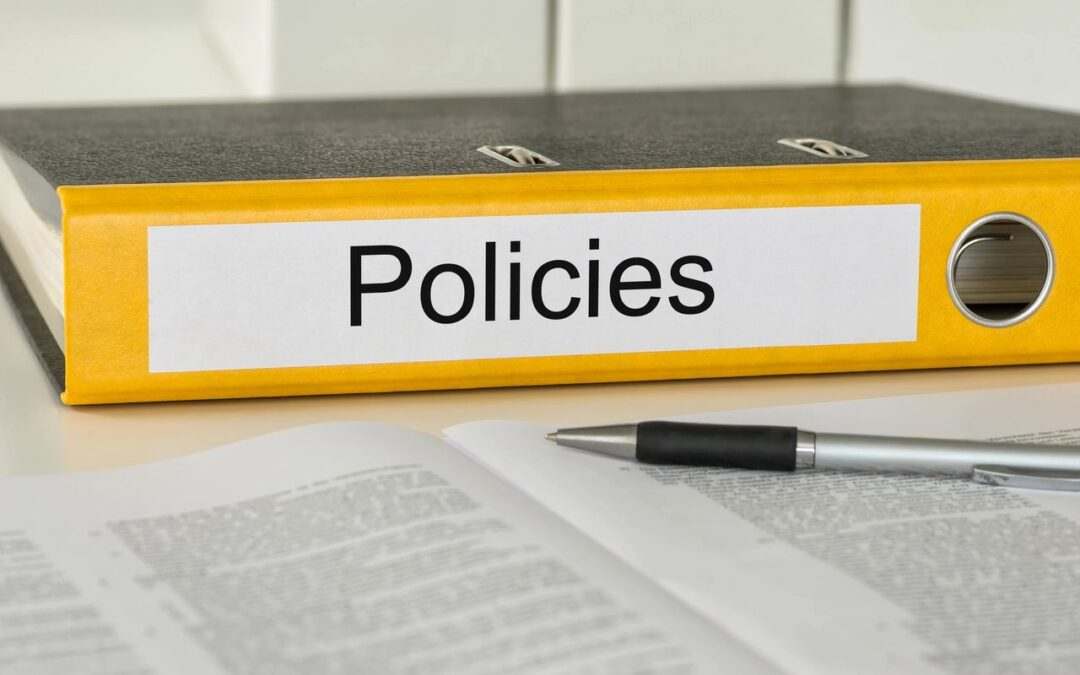Employers are currently dealing with things that most did not expect to ever face. Who could have imagined government shutdowns, policies about wearing masks, and people being quarantined?
Employers are now scrambling to address this new environment and reflect those changes in their employee handbooks. The following is a list of some of those policies that should be updated or developed to address today’s needs:
1. Pandemic Preparedness Policy: While this should have already been in place to help you prepare for this time, it’s not too late to put this in writing. This policy helps you to plan who will be the pandemic coordinator and/or team, with defined roles and responsibilities for preparedness and response planning.
2. Leave and Time Off Policies: The Family First Coronavirus Response Act (FFCRA) requires those employers with under 500 employees (with some exceptions for employers under 50 employees) to offer paid sick leave and FMLA in certain COVID-related situations. Generally, the Act mandates that covered employers must provide to all employees:
· Two weeks (up to 80 hours) of paid sick leave at the employee’s regular rate of pay where the employee is unable to work because the employee is quarantined (pursuant to Federal, State, or local government order or advice of a health care provider), and/or experiencing COVID-19 symptoms and seeking a medical diagnosis; OR
· Two weeks (up to 80 hours) of paid sick leave at two-thirds the employee’s regular rate of pay because the employee is unable to work because of a bona fide need to care for an individual subject to quarantine (pursuant to Federal, State, or local government order or advice of a health care provider), or care for a child (under 18 years of age) whose school or child care provider is closed or unavailable for reasons related to COVID-19, and/or the employee is experiencing a substantially similar condition as specified by the Secretary of Health and Human Services, in consultation with the Secretaries of the Treasury and Labor.
A covered employer must provide to employees that it has employed for at least 30 days:
· Up to an additional 10 weeks of paid expanded family and medical leave at two-thirds the employee’s regular rate of pay where an employee is unable to work due to a bona fide need for leave to care for a child whose school or child care provider is closed or unavailable for reasons related to COVID-19.
Currently, this Act is temporary and is scheduled until the end of 2020. Take a look at your other vacation, PTO, sick leave, and medical leave policies to ensure that they all work with each other.
If you have more than 500 employees, consider how you will handle time off for COVID reasons.
3. Health and Safety Policies: Do you have policies that address how you will handle proper cleaning of the workplace, social distancing, and mask wearing? In addition, what is your policy if someone tests positive or has symptoms of COVID upon returning to work? The CDC has detailed guidelines for employers. Using these to help develop a policy would be prudent in ensuring you are following the recommended steps to prevent the spread in your workplace. https://www.cdc.gov/coronavirus/2019-nCoV/index.html.
Employers should remember that guidance from public health authorities is likely to change as the COVID-19 pandemic evolves. Therefore, employers should continue to monitor and follow the most current information on maintaining workplace safety.
4. Work from Home Policy: The number of people who work from home has dramatically increased since March of this year. In establishing a work from home policy, you need to establish a system to determine which positions can work from home. Outline how you will handle equipment needs and who will pay for things such as internet and cell phone charges. Be clear about expectations while working from home, like work hours, productivity, communication. Discuss cyber security and the importance of maintaining confidentiality while working at home. Finally, talk about the importance of reporting time accurately, including overtime and time off.
5. Layoff/Furlough Policy: Layoffs and furloughs have been an unfortunate trend during this pandemic. Do you have a policy or plan if you have to lay off staff? Things to consider when writing a policy include: how employees will be selected for layoff or furlough; how and when it will be communicated to those being laid off and other employees; how employees will be selected for recall if not a permanent layoff; how vacation, sick leave, etc. will be handled in a layoff or furlough; if you provide and how much will you provide in severance for permanent layoffs.
6. ADA Policy: The EEO laws, including the ADA and Rehabilitation Act, continue to apply during the time of the COVID-19 pandemic, but they do not interfere with or prevent employers from following the guidelines and suggestions made by the CDC or state or local public health authorities. Typically, taking temperatures or asking a series of health-related questions of employees is usually not allowed. However, since COVID-19 is considered a “direct threat to the health of individuals,” employers are allowed to both take the temperatures of employees and ask COVID-related questions of employees. In addition, if individuals have disabilities that place them at greater risk from COVID-19 and request accommodations to eliminate possible exposure, some accommodations may meet their needs on a temporary basis without causing undue hardship on the employer. Policies should be adjusted temporarily to include these aspects.
With the ever-changing environment, policies will need to be adjusted further. For more information or for help updating or developing these and other policies, please contact me at slooney@insighthumanresources.com.

